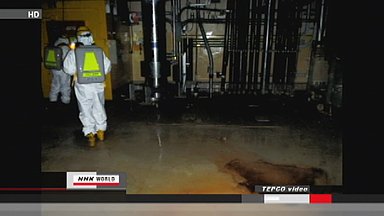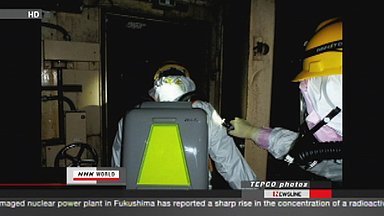– Fukushima Reactor Containment Vessels Are Leaking, Tepco Says (Bloomberg):
Tokyo Electric Power Co. said the containment chambers of two of three damaged reactors at its Fukushima nuclear plant may have been breached.
May 25 Bloomberg — Tokyo Electric Power Co. said the containment chambers of two of three damaged reactors at its Fukushima nuclear plant may have been breached.
The company known as Tepco said computer analysis of the meltdowns of three reactors at the Fukushima Dai-Ichi plant indicate the No. 1 chamber has one hole and the No. 2 unit has two breaches, according to a report filed a Japanese nuclear watchdog.
Containment chambers surround the reactor vessel, which holds the fuel rods, and are meant to stop radiation and coolant leaks in the case of overheating.
Tepco yesterday confirmed meltdowns of fuel rods in the No. 2 and 3 reactors at the station north of Tokyo, which has been emitting radiation since an earthquake and tsunami knocked out power and cooling systems on March 11.
– Fukushima Containment Vessels May Be Leaking, Tepco Says (Bloomberg):
May 25 (Bloomberg) — Tokyo Electric Power Co. said the containment chambers of damaged reactors at its Fukushima nuclear plant were likely breached, identifying additional source of radiation leaks that may exceed Chernobyl.
Computer simulations of the meltdowns of three reactors in March indicates holes formed in chambers, the company known as Tepco said in a report.
The analysis confirms what independent researchers have said occurred after the March 11 earthquake and tsunami hit the plant. The report to the government raises fresh questions about how Tepco, which took more than two months to acknowledge fuel rods had melted, is handling the crisis, a nuclear researcher said.
“Unfortunately I can’t find any consistency in the report,” Hironobu Unesaki, a nuclear engineering professor at Kyoto University, said by phone. “Tepco hasn’t released sufficient radionuclide analysis of leaked contaminated water. Now they’ve confirmed fuel rods melted, they should also release more data including plutonium and uranium readings.”
Containment chambers surround the reactor vessel, which holds the fuel rods, and are meant to stop radiation and coolant leaks in the case of overheating.
Read moreTEPCO: Fukushima Containment Vessels (Meant To Stop Radiation) May Be Breached – Additional Source Of Radiation Leaks May Exceed Chernobyl



